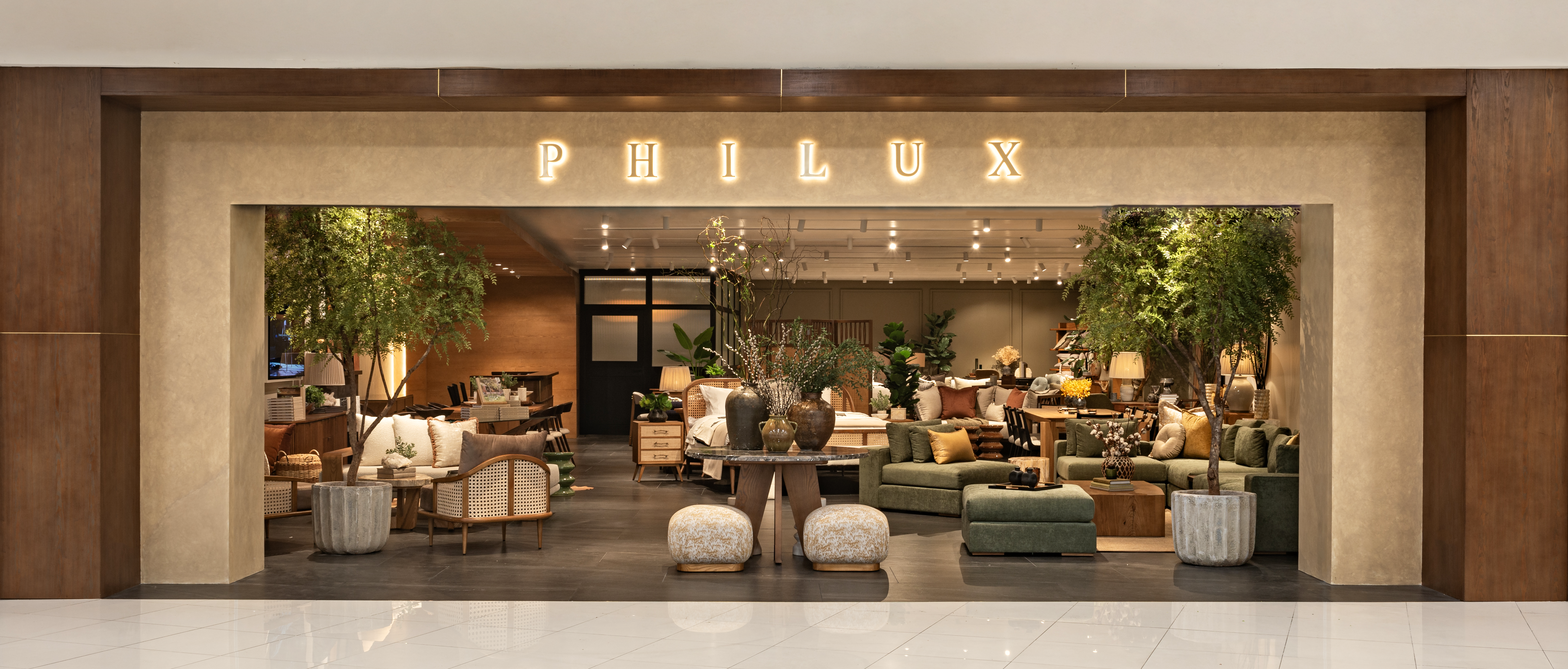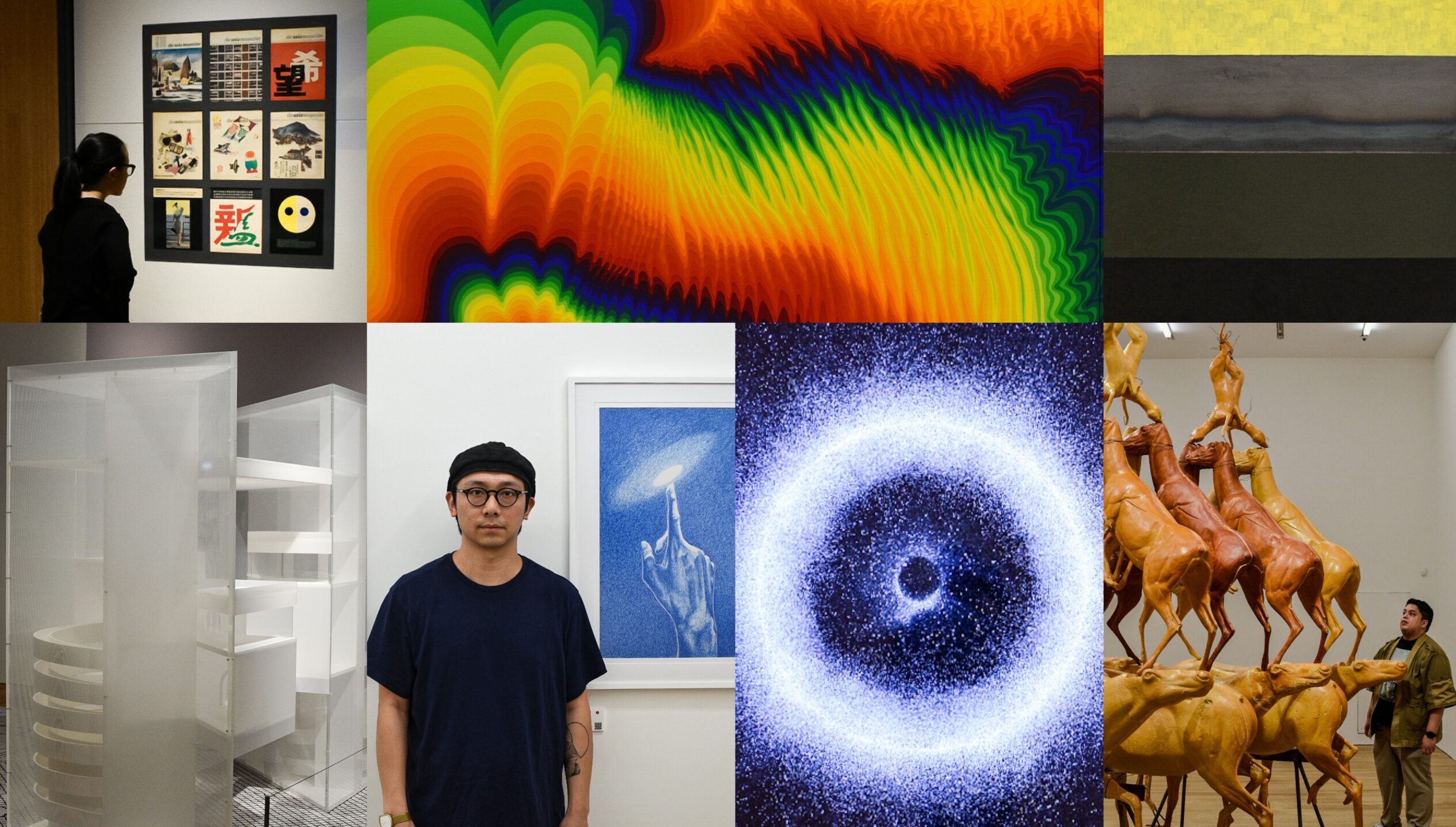In their newest flagship showroom, Philux reimagines personalized furniture with intentional design
Walking through the fourth level of the Mega Fashion Hall in SM Megamall, the warm light from the Philux showroom beckons passersby to take a look inside.
Inspired by the “spirit of home,” the space is dressed in earthy hues and natural materials. Apart from earthy tones, arched mirrors light up the space, and accent walls in a Venetian plaster finish add an element of patina. You’ll find an architectural desk design with a woven veneer and solid brass rods. Deeper inside, a consultation room provides a space for in-house designers to privately meet with clientele.
This is the Philux showroom, where creativity meets conscious luxury in celebration of artisanal Filipino design.
In an exclusive interview with LIFESTYLE.INQ, designers Stephanie Kienle Gonzalez and Jessica Kienle Maxwell give an inside look into the Philux history, design process, and conscientious vision.
On Philux’s familial history
Founded in 1980, Philux was begun by the husband-and-wife team of Max and Zelda Kienle. What began as a small workshop with two carpenters has since grown into a 200-person team, with five showrooms around Metro Manila.
The proud purveyors of Philippine artistry have passed the torch to sisters Stephanie Kienle Gonzalez and Jessica Kienle Maxwell, who now continue to cultivate the spirit of the well-loved local furniture brand after four decades.
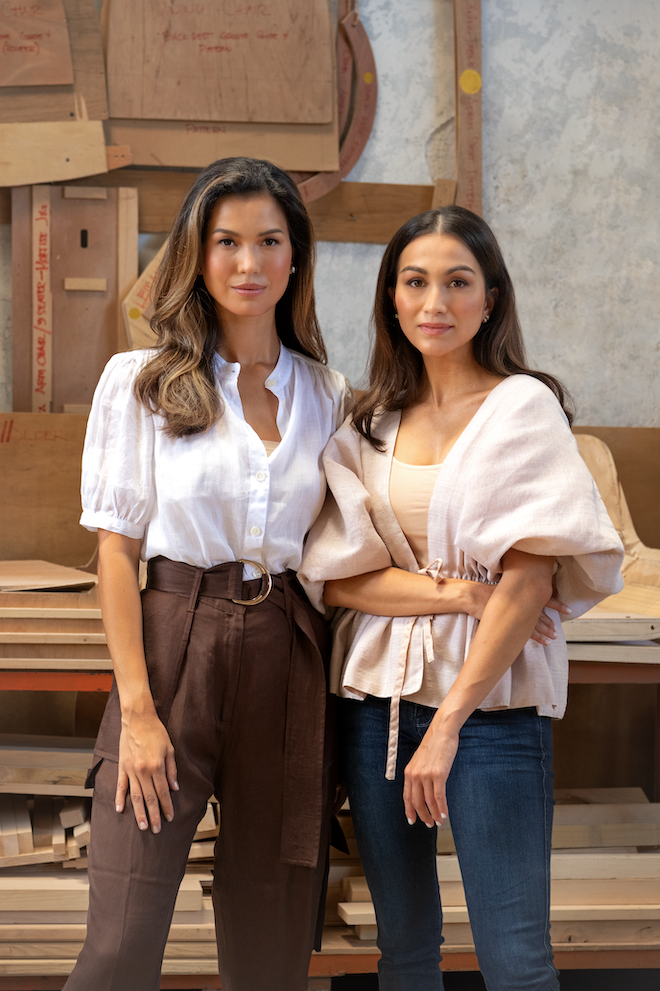
Jessica: We grew up with parents who appreciated and understood the beauty of slow furniture—the ethos that luxury is not defined by price but by the time, intent, and effort invested.
Stephanie: As Jess and I became involved in the business and eventually took over management of the company, our aim has always been to maintain that same philosophy. To focus on quality over quantity, and to preserve our family values and heritage.
Jessica: In its early years, Philux was defined by a classic design aesthetic, with predominantly wooden furniture pieces made using traditional craftsmanship techniques. With the second generation at the helm, the team expanded its material selection range of wood, finish, fabric, metal, matting, and handle options, making the furniture selection process a more personalized experience. It has also diversified its design aesthetic, incorporating elements not only inspired by Filipino materials and motifs but also by contemporary European styles.
Exploring a different kind of showroom
This sense of championing local has been at the heart of Philux, allowing the brand to grow and evolve organically over the years.
Inside the showroom, thoughtful details infuse the space with the appeal of the artisanal. This comes from the brand’s close creative collaboration with select local craftsmen and trade experts.
Concrete solutions expert JVAZCO adds a textural element to the space with an architrave and accent walls in a Venetian plaster-style finish. The accessories are also curated and sourced from local artisans. There are marble decorations made by Romblon’s stonework craftsmen, contemporary-inspired ceramic vases from Tarlac, vessels from Ilocos traditionally used for storage of salt as well as baskets and other woven accessories handmade in Ifugao.
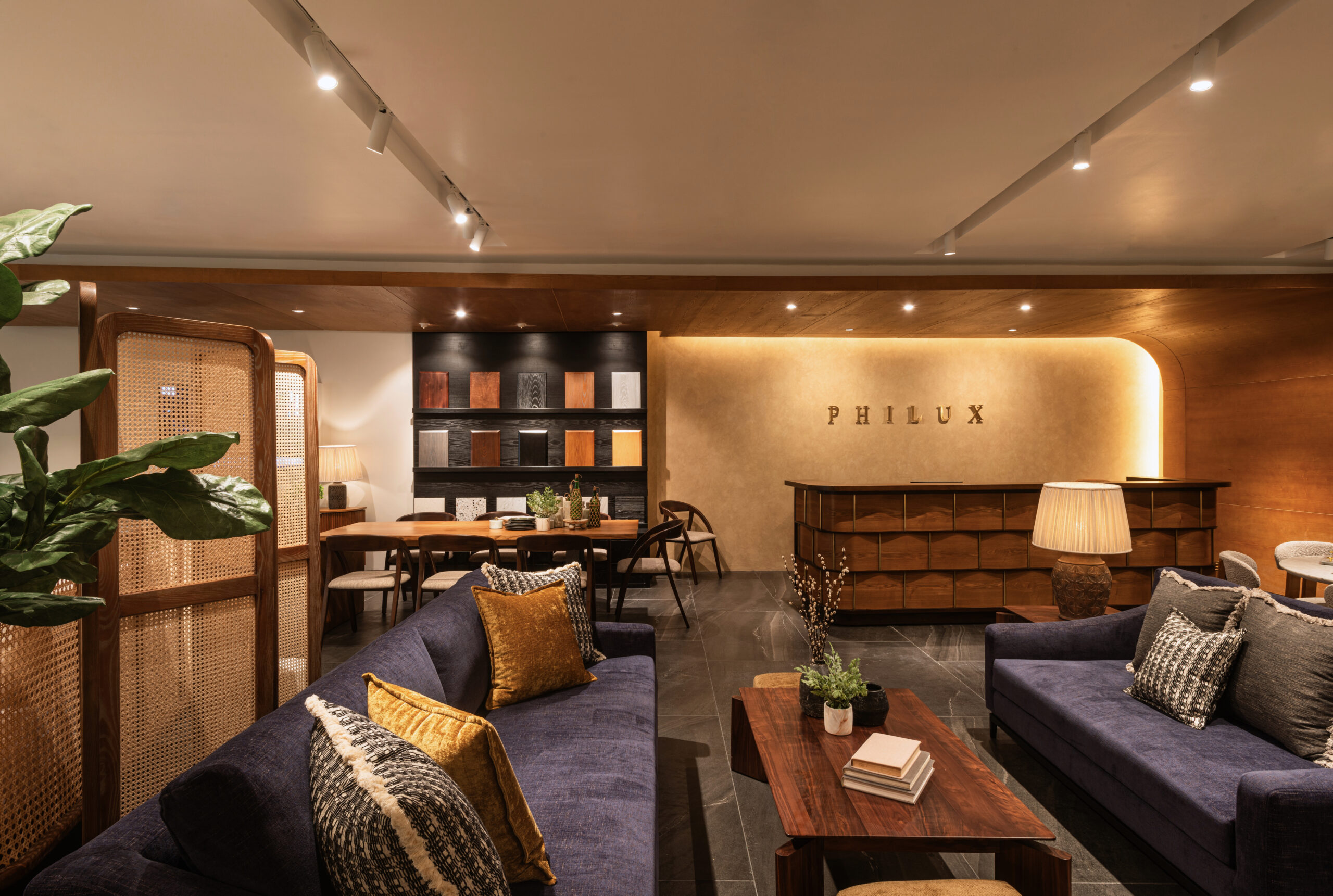
Hanging on the walls are artwork made of handwoven abaca textiles by French-Filipina artist Olivia D’Aboville, one-of-a-kind pottery by Filipino ceramic artist Joey De Castro as well as soft furnishings upholstered in Anthill Fabric, a social and cultural enterprise that uplifts local weaving communities.
READ MORE: French-Filipina Artist Olivia d’Aboville Mounts Her 10th Solo Exhibition
Jessica: Furniture is the functional embodiment of the feeling of home, comfort, and warmth. This is the ambiance we wanted to create in the new space… It offered the team, which typically collaborates on designing furniture, a blank canvas to express the feeling of home from the Philux point of view on a larger scale.
About the brand’s dynamic design process
The design process at Philux is meticulous, with a single design taking up to a year to complete, from initial ideation to final execution. While the selection of designs has increased, certain design tenets of Philux have evolved to encapsulate a wider range of tastes.
Jessica: Our clientele is increasingly design-savvy, and this pushes us to continue to grow and elevate our offering. In the ’90s, when you walked into a Philux showroom, you would find furniture pieces predominantly crafted from wood and a small selection of upholstered designs. Today, when you visit our spaces, you are greeted by a dynamic but refined selection of designs in a wide range of materials and styles.
We are trying to go beyond what we’ve done for years. Recently, we’ve incorporated locally-woven textiles into our throw pillows and accent pieces, sourced one-of-a-kind live-edge wood slabs from around the region, worked on the production of custom hardware with a metal artisan based in Metro Manila, and collaborated with craftsmen in Cebu to create unique accessories out of rattan.
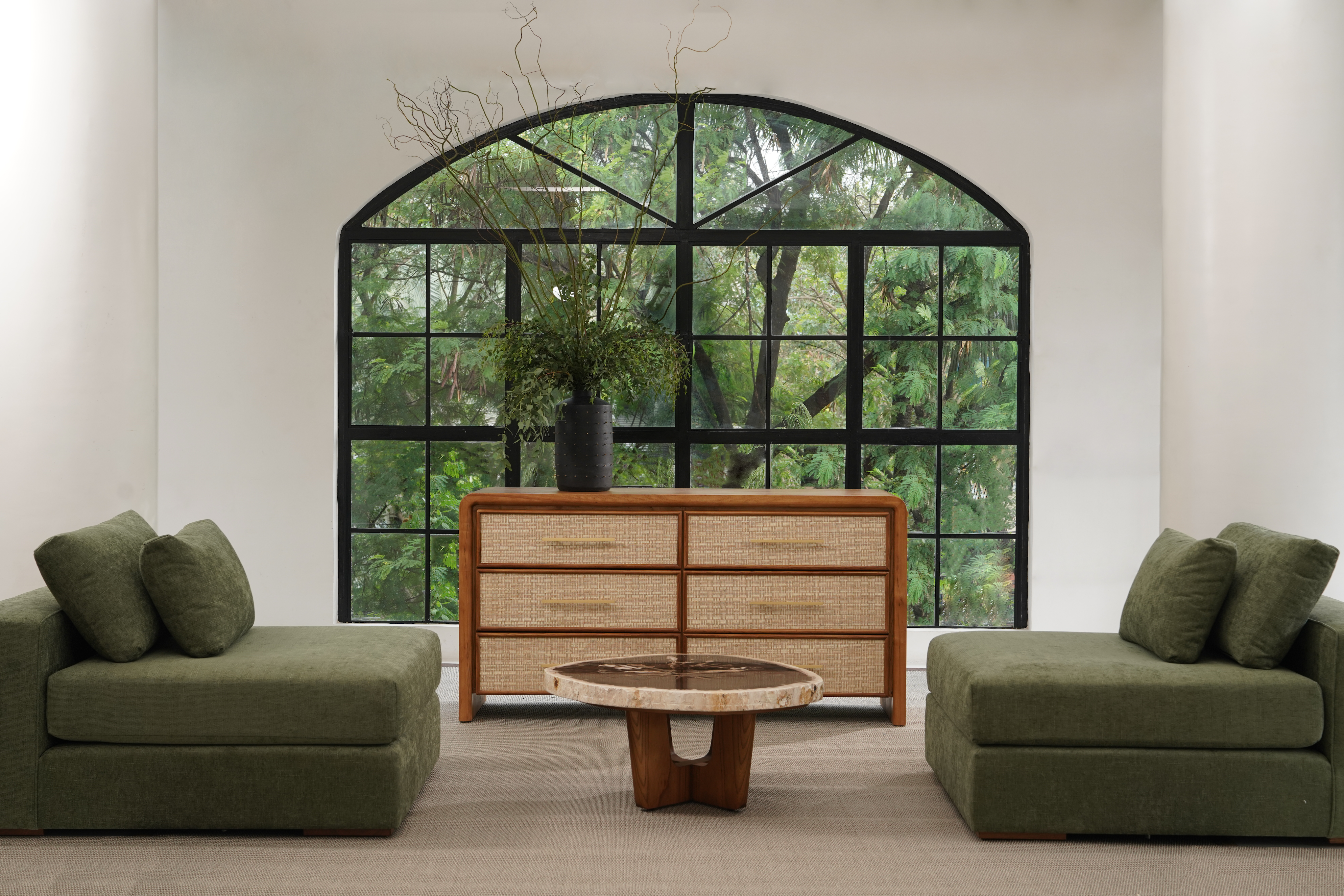
Stephanie: Wood and its natural beauty will always be at our core. However, wood is no longer the only material you will find at Philux. We have found that showcasing raw materials’ natural characteristics, layering textures and silhouettes, and adding elements of patina make for furniture pieces and spaces that stand the test of time. We have incorporated fabrics in more vibrant colors and bolder prints; table tops in live edge wood, petrified wood, and natural stone; mattings in a wide range of patterns and textures; slipcovers that elevate upholstered seating; as well as special finishes that add an element of patina to a piece… We are trying to go beyond what we’ve done for years.
We love the hunt. We are constantly searching for special materials that allow us to add character to a piece and, ultimately, to a space—whether that be a new two-toned ceruse wood finish, a unique solihiya matting option for a bed frame, a custom shape handle for a storage piece, or a special stone for a tabletop.
The intentional vision of Philux
If there’s one thing about Philux that sets the brand apart from others, it’s that each design is intentional and made to last lifetimes. We get an inside look into their production facility and furniture workshop.
Stephanie: The team consists of the more left-brained operators and engineers and the more right-brained creatives. It’s two different worlds that have to harness their specialties and work in harmony to create quality designs.
Given we are creating investment pieces that are intended to be passed down from generation to generation, we recognize the need to be extremely detail-oriented in our process… starting from the creative direction and translating that into a technical drawing to evaluating the production process and specific craftsmanship skills to be applied to going through the multiple rounds of prototyping and adjusting, and determining the range of material options to be made available to our clientele.

We carefully study every aspect: the thickness of the wood, the radius of angles, the choice of hardware, the seamlessness of joints and edges, the patterns of cushions, and the application of ergonomics. We are considering the amount of raw material to be used and the amount of waste to be produced with each piece. We also think about how the design would fit into our clientele’s spaces—from how a piece can go through door and elevator access points to how it can complement different moods and interior design styles.
As Philux continues to source from nature and be inspired by its beauty, it remains steadfast in its commitment to sustainability. The team consistently studies how to reduce environmental impact with conscious engineering, ethical sourcing of raw materials, and upcycling waste.
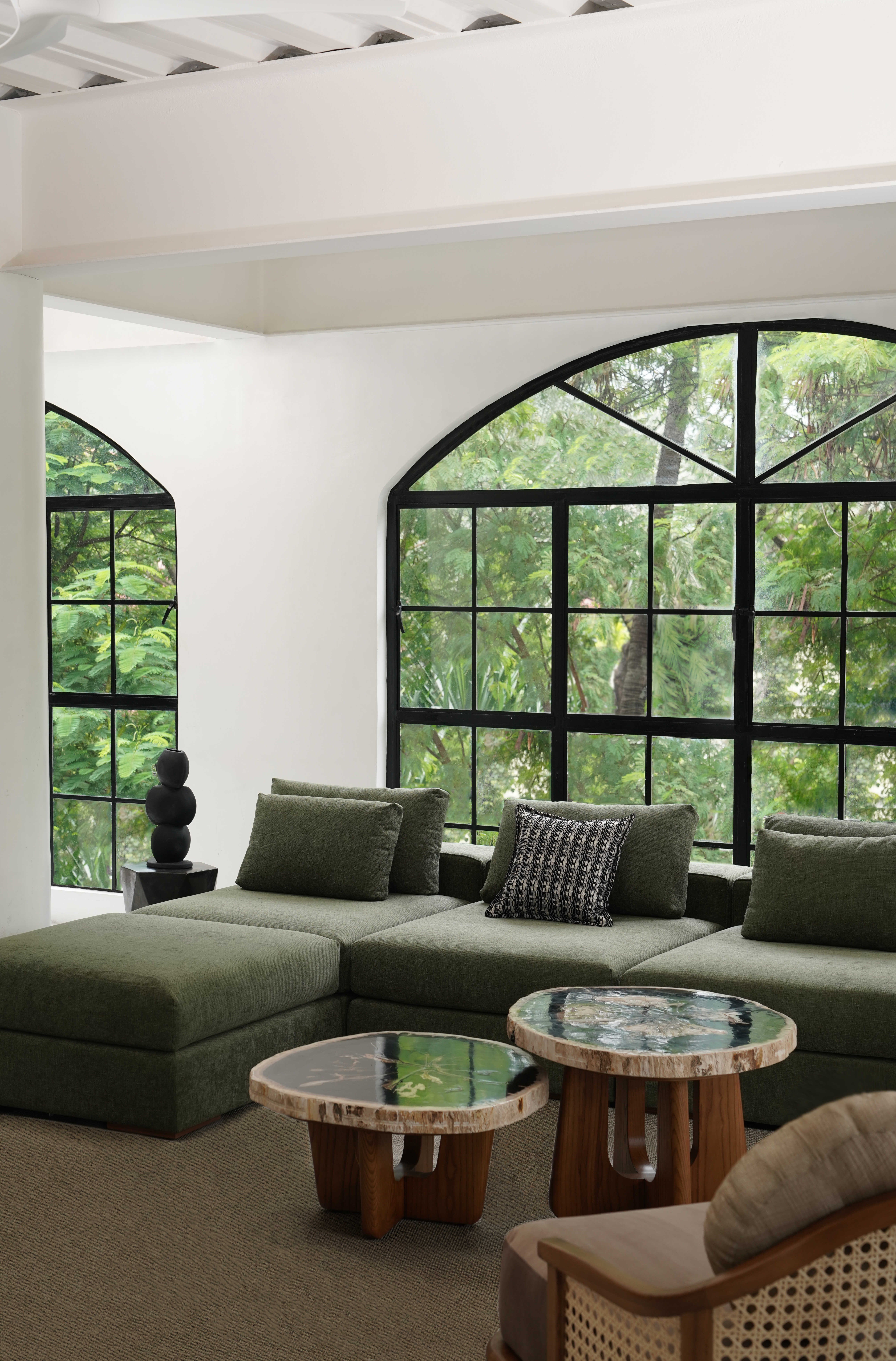
Jessica: At the moment, we are focused on conceptualizing pieces that make use of material waste. We don’t want to just produce upcycled items for the sake of it, but to ensure that they are still design-forward with details that are as carefully considered as any other furniture or accessory we add to our offering.
Stephanie: Looking ahead, as we hope to continue to elevate our showrooms, we look forward to collaborating with more of those who share in our purpose.

